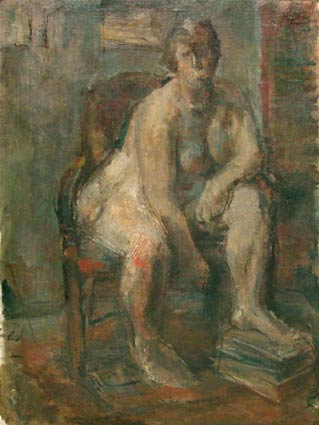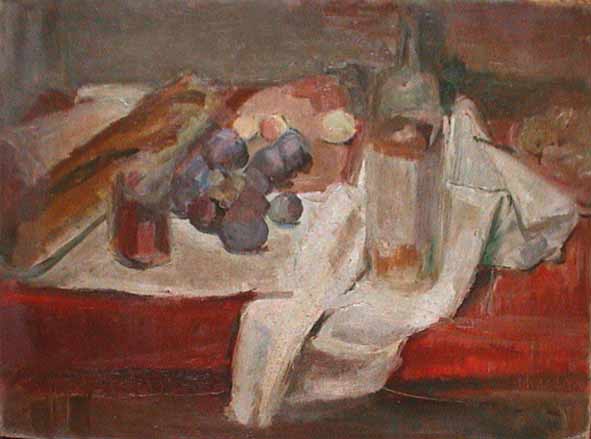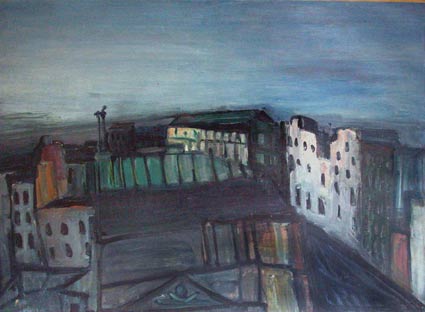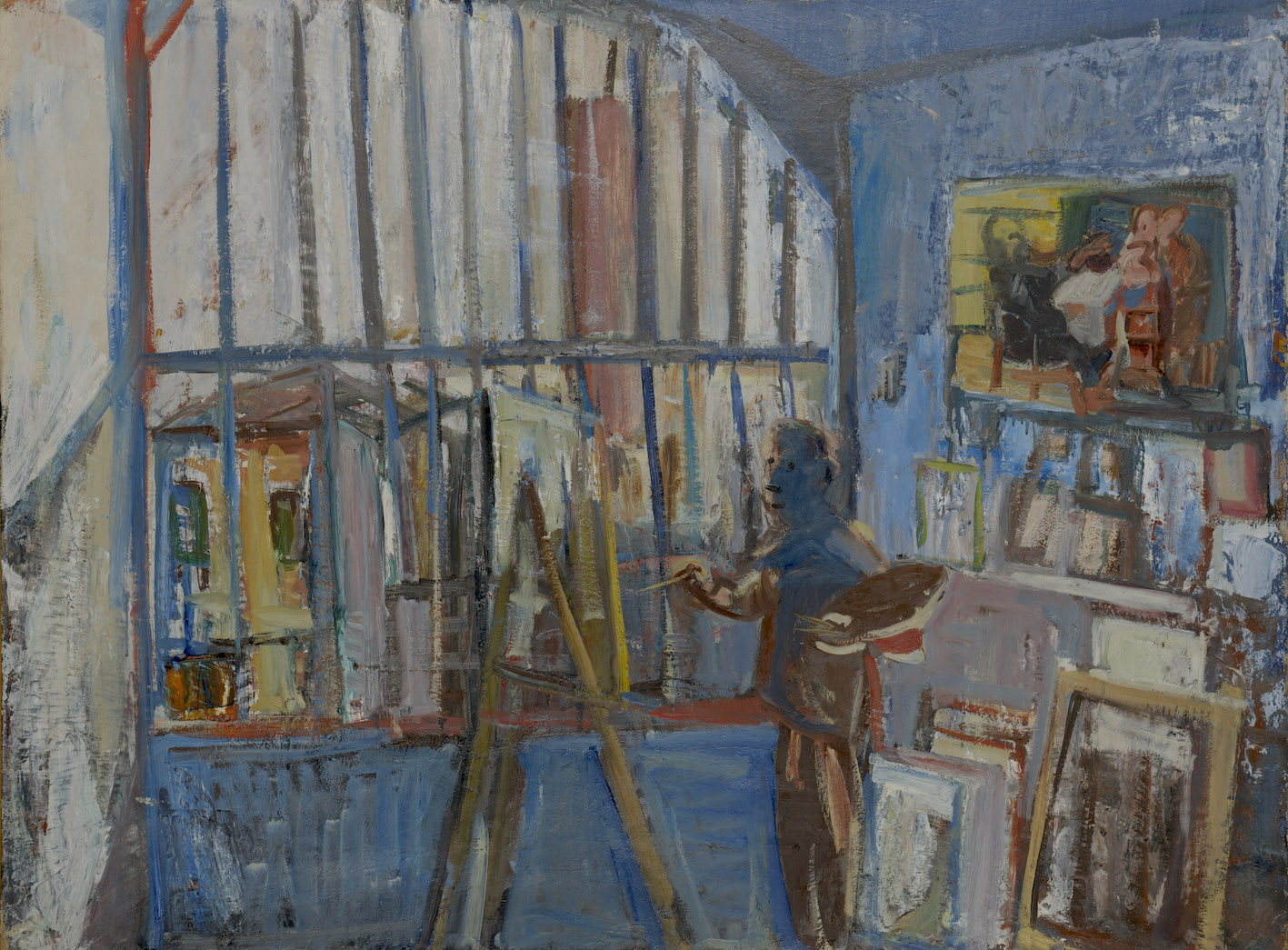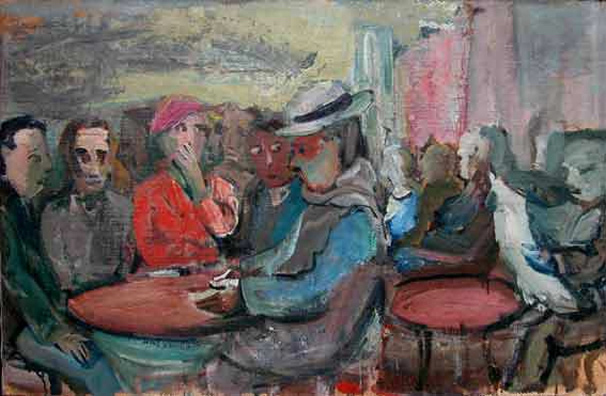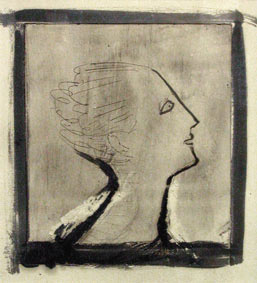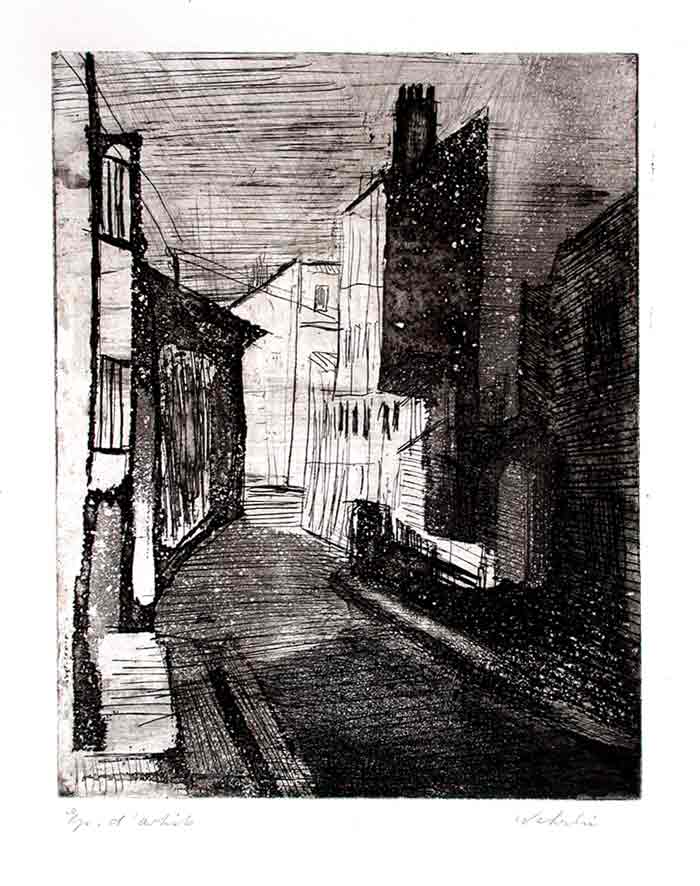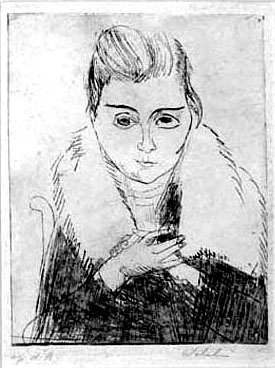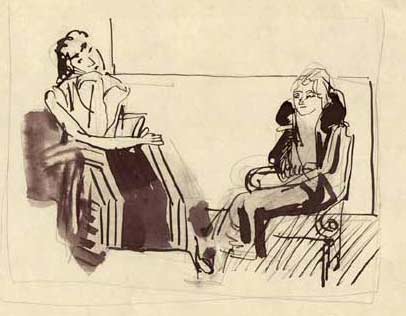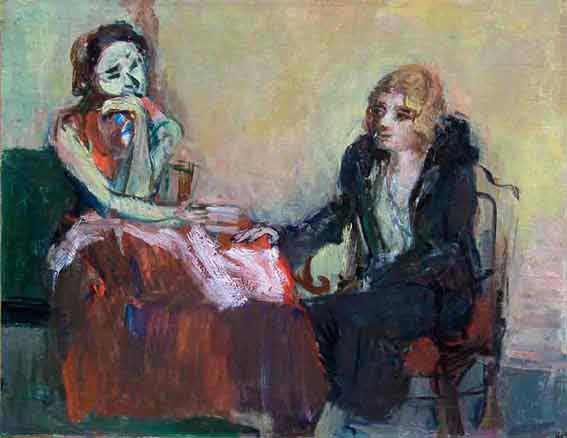From 1925 onwards, Wehrlin exhibits his work at the Salon d’Automne. The thirties saw the production of numerous Parisian landscapes, the interior of his workshop, the one he had in rue Vercingétorix in Montparnasse and then the one in Montrouge, where he lived in Montrouge from 1934 to 1938. In 1925, Wehrlin meets Germaine Dupuis, later to become not just his wife but his main model, except for « La Grecque », a well-formed model who was famous in Montparnasse and who incidentally later married Arno Breker, the official sculptor for the Third Reich.
Surrounded by the atmosphere of Montparnasse, with his workshop on the rue Vercingétorix, Wehrlin attacks a number of subjects using many different techniques, portraits, nudes, brothel scenes, groups of people on cafe terraces, Parisian landscapes, still life, just about everything. In 1932 he becomes a member of the Küstlergruppe at the Winterthur museum, where every year thereafter he was to exhibit his works, right up to the year he died.
He often visits his workshop neighbour, Alberto Giacommetti, Willy the « Varlin » Guggenheim and the Berne sculptor, Serge Brignoni also being amongst his friends in Montparnasse. In Montrouge, he was to become the neighbour and close friend of the Swiss painter Max Gubler
Towards 1930, thanks to his meeting with Jacques Villon, he rediscovers etching, a technique in which Kirchner had initiated him five years earlier. Once again he wastes no time numbering and signing his work. He is above all experimenting and many of his works are one-off copies, artist’s proof copies. Between each impression he reworks the copper plate or goes over the outlines of the copy in Indian ink.
Wehrlin makes no distinction between the supports he uses. He draws and paints on anything that comes to hand : the back of envelopes, old cardboard, headed note paper, sack cloth just about stretching over a make-do frame. The reason for this is not shoddy workmanship. What matters above all to him is the research and the expression of that research. Never mind the future of the object that a painting or a drawing represents, what matters to him is the creative instant.
|
